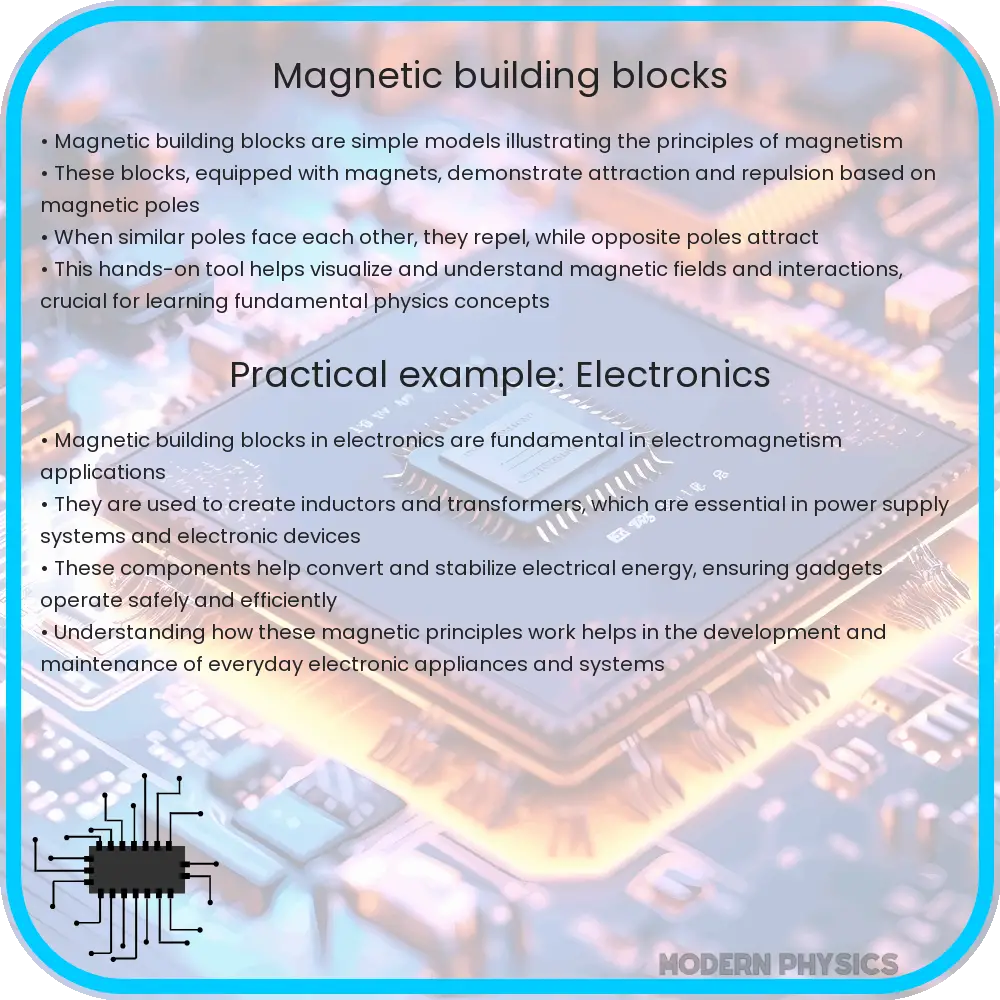Explore the educational and creative benefits of magnetic building blocks for children’s development, focusing on safety and playtime integration.

Magnetic Building Blocks: A Fusion of Fun and Learning
Magnetic building blocks have revolutionized the way children play and learn. Combining elements of education, creativity, and safety, these innovative toys offer a multifaceted approach to childhood development. They are not just another set of building blocks; they are a gateway to a world of imagination, learning, and fun.
Educational Benefits
The educational advantages of magnetic building blocks are substantial. They introduce young minds to basic concepts in physics, specifically magnetism and structural integrity. Children learn about magnetic poles, represented by the north (N) and south (S) poles, and how they attract and repel each other. This hands-on experience with magnetic forces makes abstract scientific concepts more tangible and understandable.
Beyond physics, these blocks also enhance cognitive skills. They promote problem-solving as kids figure out how to build structures that won’t collapse. Additionally, they help in developing spatial awareness, an essential skill in understanding geometry and spatial relationships. This kind of play also enhances fine motor skills, crucial for writing and other detailed activities.
Creative Development
Creativity flourishes when children are given the freedom to explore and invent. Magnetic building blocks offer an open-ended play experience. With no set rules or expected outcomes, children can build whatever they imagine, whether it’s a towering skyscraper, a futuristic vehicle, or an abstract sculpture. This kind of creative play is vital for developing innovative thinking, a skill that is increasingly valuable in our rapidly changing world.
Safety Considerations
Safety is a paramount concern when it comes to children’s toys. Magnetic building blocks are designed with safety in mind. The magnets are securely enclosed within the blocks, preventing them from becoming loose and posing a swallowing hazard. The blocks are also typically made from non-toxic, high-quality materials, ensuring they are safe for children to handle and chew on. Additionally, the rounded edges and corners of the blocks prevent injuries during play.
Another safety feature is the size of the blocks. They are generally large enough to prevent choking hazards, making them suitable for young children. However, it’s always important for parents and guardians to supervise playtime, especially with younger children who might still be tempted to put small objects in their mouths.
In conclusion, magnetic building blocks are much more than toys. They are educational tools that nurture a child’s cognitive and creative development while ensuring a safe play environment. In the next part of this article, we will delve deeper into the types of magnetic building blocks available, their impact on early childhood education, and tips for choosing the right set for your child.
Variety and Selection: Choosing the Right Magnetic Blocks
When it comes to selecting the right set of magnetic building blocks, the options are plentiful. These sets vary in shape, size, color, and the number of pieces. Some are designed with specific themes, like vehicles or buildings, to appeal to different interests. It’s important to choose a set that is age-appropriate. For younger children, larger blocks with simple shapes are ideal, while older kids might enjoy more complex sets with a variety of shapes and sizes.
Impact on Early Childhood Education
The role of magnetic building blocks in early childhood education cannot be overstated. In preschools and early learning centers, these blocks are increasingly being used as educational tools. They provide a hands-on learning experience that is both engaging and effective. Teachers often use these blocks to explain basic scientific concepts, encourage cooperative play, and develop fine motor skills. The versatility of these blocks makes them an invaluable resource in the classroom.
Tips for Integrating Magnetic Blocks in Playtime
Integrating magnetic blocks into your child’s playtime can be both fun and educational. Here are a few tips:
- Encourage exploration: Allow your child to freely explore the blocks without too much direction. This fosters creativity and independent thinking.
- Ask open-ended questions: Questions like “What are you building?” or “How do you think these pieces can fit together?” stimulate critical thinking and language skills.
- Play together: Collaborative play with magnetic blocks can strengthen social skills and parent-child bonds. Building something together can be a rewarding experience.
- Incorporate learning: Use the playtime to introduce basic concepts of geometry, magnetism, and physics in an age-appropriate manner.
Conclusion
Magnetic building blocks are more than just toys; they are a powerful educational tool that nurtures the holistic development of children. They blend fun with learning, fostering creativity, cognitive skills, and an understanding of basic scientific principles, all within a safe and engaging environment. By choosing the right set and incorporating them effectively into play, parents and educators can significantly contribute to a child’s early learning and development. In a world where technology and innovation are paramount, magnetic building blocks lay the foundation for the problem-solvers and creative thinkers of tomorrow.
